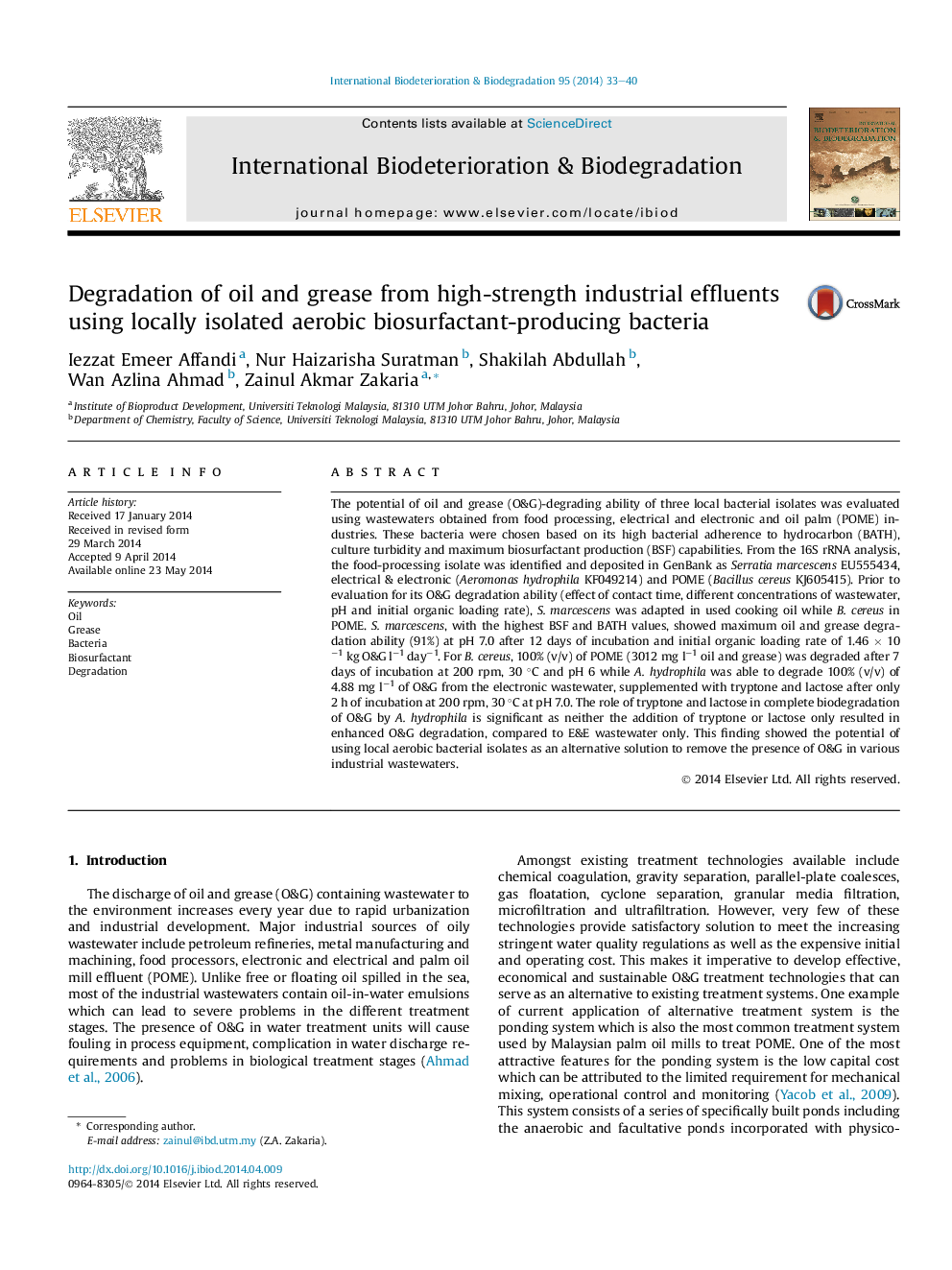| Article ID | Journal | Published Year | Pages | File Type |
|---|---|---|---|---|
| 4364598 | International Biodeterioration & Biodegradation | 2014 | 8 Pages |
•Biodegradation of oil and grease from industrial wastewaters using locally isolated bacteria.•Adaptation process significantly increased the percentage of O&G biodegradation.•Contact time, pH plays significant role in overall O&G biodegradation.•Initial POME concentration and nutrient supplementation did not affect O&G biodegradation.
The potential of oil and grease (O&G)-degrading ability of three local bacterial isolates was evaluated using wastewaters obtained from food processing, electrical and electronic and oil palm (POME) industries. These bacteria were chosen based on its high bacterial adherence to hydrocarbon (BATH), culture turbidity and maximum biosurfactant production (BSF) capabilities. From the 16S rRNA analysis, the food-processing isolate was identified and deposited in GenBank as Serratia marcescensEU555434, electrical & electronic (Aeromonas hydrophilaKF049214) and POME (Bacillus cereusKJ605415). Prior to evaluation for its O&G degradation ability (effect of contact time, different concentrations of wastewater, pH and initial organic loading rate), S. marcescens was adapted in used cooking oil while B. cereus in POME. S. marcescens, with the highest BSF and BATH values, showed maximum oil and grease degradation ability (91%) at pH 7.0 after 12 days of incubation and initial organic loading rate of 1.46 × 10−1 kg O&G l−1 day−1. For B. cereus, 100% (v/v) of POME (3012 mg l−1 oil and grease) was degraded after 7 days of incubation at 200 rpm, 30 °C and pH 6 while A. hydrophila was able to degrade 100% (v/v) of 4.88 mg l−1 of O&G from the electronic wastewater, supplemented with tryptone and lactose after only 2 h of incubation at 200 rpm, 30 °C at pH 7.0. The role of tryptone and lactose in complete biodegradation of O&G by A. hydrophila is significant as neither the addition of tryptone or lactose only resulted in enhanced O&G degradation, compared to E&E wastewater only. This finding showed the potential of using local aerobic bacterial isolates as an alternative solution to remove the presence of O&G in various industrial wastewaters.
